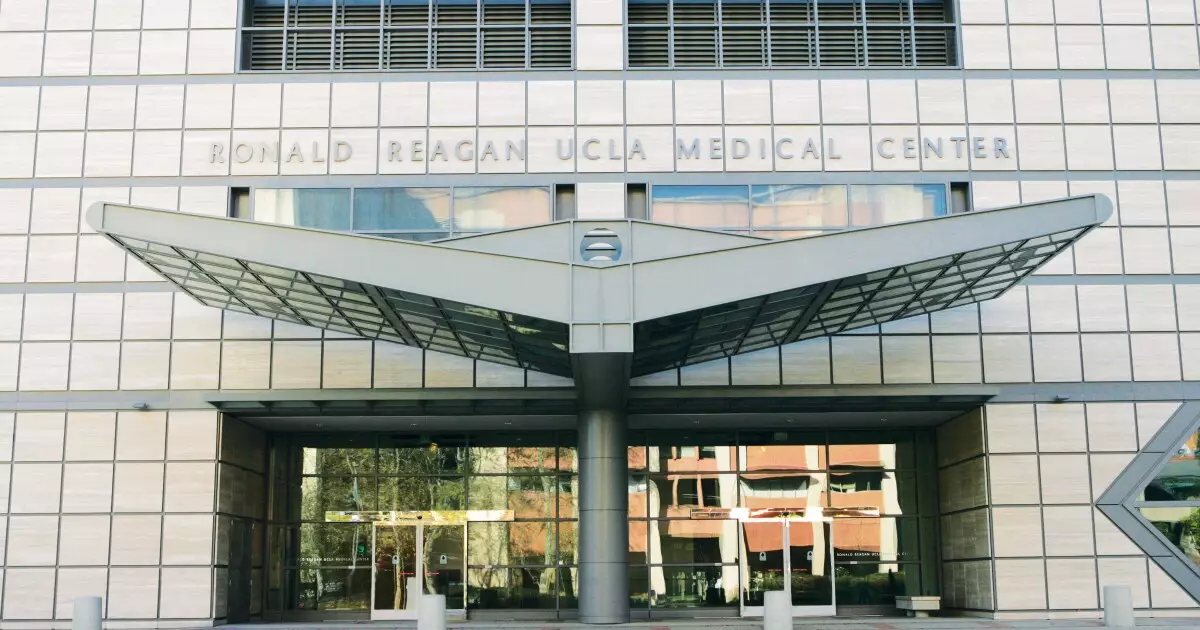The recent federal budget reconciliation package marked by drastic Medicaid cuts reveals an alarming trajectory that threatens to undermine the very foundation of American higher education. Far from being just a fiscal adjustment, these policies serve as a calculated blow to public universities, especially those with substantial medical centers. The implications are far-reaching: financial stability will erode, service quality may decline, and the access to affordable healthcare—intertwined with education—will be compromised. This is not simply a budgetary issue; it is a strategic attack on the social fabric that sustains an educated and healthy populace.
The notion that universities can withstand such cuts unscathed is a dangerous illusion. For flagship institutions like the University of California system, which operates some of the most significant academic health centers and hospitals in the nation, the reduction in Medicaid funding spells chaos. Nearly 41% of revenue for UC’s medical centers stems from Medicaid—funds critical for patient care, research, and innovation. When that money dries up, the ripple effects threaten to destabilize healthcare services, jeopardize ongoing research projects, and diminish the training pipeline for future health professionals. These are not trivial matters; they are the backbone of the nation’s future public health strategy.
The political narrative often glosses over the profound consequences of such funding cuts. These policies are essentially a double-edged sword—while aiming to cut deficits, they simultaneously emasculate the educational hub that supplies America’s next generation of doctors, researchers, and leaders. The proposed $1 trillion reduction in Medicaid over ten years isn’t just a fiscal policy move; it’s a concerted effort to dismantle the fiscal sustainability of public universities that serve significant Medicaid populations. This isn’t merely about budget balancing but about reshaping the landscape of higher education into a more fragile, less comprehensive sector—a sector increasingly dependent on federal support that has now been systematically dismantled.
The Domino Effect: State Funding and Institutional Vulnerability
Federal cuts do not exist in isolation; their repercussions seep into state budgets, further compounding the crisis. State governments, already under financial pressure, will inevitably be forced into difficult choices—either increase taxes or reduce spending on essential services, including higher education. Since many public universities depend heavily on state funding, a reduction here accelerates their financial decline. Institutions like the California State University system, which relies on 40% of its revenue from state support, will be pushed into a corner. Their already strained budgets will face further squeeze, leading to staffing cuts, program reductions, and deferred maintenance that undermine educational quality.
Even universities with a more diversified revenue base face peril. The University of California, with its higher dependence on patient care reimbursements from Medicaid, risks seeing its crowning health facilities devalue. Medical centers that once thrived on the synergy of research, teaching, and healthcare delivery will find their revenue streams compromised, making it harder to innovate or expand services. Such financial instability does not promote growth; it encourages risk aversion, underinvestment, and ultimately a decline in national leadership in health sciences.
Furthermore, the political landscape complicates recovery efforts. When federal policies become unpredictable, institutions must brace for further shocks. The proposed budget environment incentivizes short-term thinking, discourages long-term investments, and injects a high level of uncertainty that is toxic to strategic planning. As a result, universities—traditionally engines of innovation—are forced into survival mode, prioritizing immediate financial stability over groundbreaking research or educational excellence.
The Borrowing and Bond Market: A Fragile Lifeline
To remain afloat amid shrinking revenue streams, universities have increasingly turned to bond markets for financing. The University of California system, with its debt portfolio exceeding $30 billion, exemplifies this trend. Bond ratings from Moody’s and Fitch still reflect relative stability, but the risk premiums have widened noticeably. The critical insight is that these financial instruments are only as resilient as the underlying revenue streams they depend on—revenues that are now under threat from federal Medicaid cuts.
If the health centers increasingly struggle to make bond payments, the entire credit structure of these institutions could face deterioration. While diversified revenue pooling provides some buffer, it is unlikely to be sufficient in the long run. Especially with looming tax hikes on private endowments and the potential for federal research grants to retreat, the financial armor of higher education institutions is thinner than ever. This instability doesn’t just jeopardize current projects; it jeopardizes future capital investments, research endeavors, and even the affordability of education for students.
The finance community remains cautious, pointing to unattractive spreads and mounting risks. For highly rated bonds—those still considered relatively secure—the widening spreads might make them more enticing in theory, but the underlying clouds of uncertainty cast long shadows over the sector’s stability. Borrowing costs will rise, allocation of financial resources will become more strained, and the very notion of long-term institutional growth will be compromised in an environment increasingly dictated by federal austerity.
Tax Policies and Political Overreach: A Stepping Stone Toward Decline
Further complicating the landscape is an aggressive push to tax private university endowments, with significant policy shifts raising the stakes for elite institutions. The new tiered tax rate—rising to 8% on large endowments—targets the financial independence of Ivy League and other private colleges, many of which contribute substantial philanthropy and research funding to the national good. While smaller schools may temporarily benefit, this policy exacerbates an already tenuous funding ecosystem.
Moreover, political threats to revoke tax-exempt statuses—like the backlash against Harvard over its Diversity, Equity, and Inclusion policies—signal an emerging climate of hostility. These threats serve as a warning: higher education is increasingly caught in the crossfire of ideological battles, with the risk of policies that undermine institutional autonomy and financial stability.
The danger lies not just in the immediate financial implications but in the broader erosion of trust and stability. Universities, particularly the elite private institutions, are not just seat of learning—they are pillars of innovation, social mobility, and cultural influence. Attacking their financial independence reduces their capacity to serve their educational missions and destabilizes the entire higher education ecosystem.

